|
This can be one of those lessons where you try something, take a break, try it again, take a break. Remember to decrease the amount of effort as you become comfortable/oriented to a movement. One of the signs of using a lot of effort is your breathing (or lack there-of). Another sign might be using your upper body to lift your pelvis, or pinning your head in the center during rolling movements. Remember, the movements are here for you to learn about yourself: in themselves, the movements aren't the point. So more/larger isn't better. Small, and clear is more helpful. Feel what you do. Feel the trajectory of movement. Listen for ease in your breath, hands, jaw, and eyes as you go.
Available on Patreon patreon.com/heatherdanso
0 Comments
In this lesson we clarify the location and movement of the hip joints and find more availability in the ankles, and participation in the low ribs, sternum, and upper chest. Now, of course, that means that the primary place of focus in the hip joints is only the beginning, and learning to facilitate the movement in the hips by softening the rest of you can transform your walking, sitting, and general sense of well-being. Two recordings available atpatreon.com/heatherdanso . We spend more time on some of the stranger movements at the end.
Tonight's lesson is a standing lesson mainly. When Feldenkrais was teaching ATM (Awareness through Movement lessons) to people who had returned from WWII, he would start with standing lessons. For people dealing with anxiety or trauma, they are often a little more accessible, because lying on the floor with eyes closed might not feel so possible. For us, they are opportunities to work with the way gravity moves through us actively. We often lie down, which is really standing, without all the work. Here, we will have all the moving parts of the dynamic relationships as we move in gravity. We'll move slowly like sloths. This will help us reorganize our hip joints, our feet, our legs, our spines, and ultimately improve our standing postures. 1. Have a chair nearby, especially if you have any issue with balance. You may not need it, but it's nice to have. Most of us used a wall at least once or twice. 2. Take of your socks, so you don't slip! Or, work on a sticky mat for padding, particularly if the hard floor is a bit hard on your bones. 3. Remember to organize with your normal breath, not a larger breath. Long and deep breaths may make you feel lightheaded. If you do feel this way, please sit down and take a nice long break. 4. One of the primary intentions of these classes is to downregulate the habitual places we keep tension, so keep your attention both specific and general - partly on the movement we are doing, and partly on where else you feel movement, where you can soften: your belly, your jaw, your hands, your shoulders. 5. Pay attention to your heel being aligned underneath the hip socket as best you can, particularly at the end of the lesson when you are making circles. Learning is more important than doing it right.
On one level, we are making friends with our whole leg, lower leg, foot and ankle. On another level, we are softening the chest, lengthening the back--lowering the static along the back body including back of the leg. This is a good moment to consider "reciprocal inhibition" - the principle that when the muscle on one side is working, the muscles on the other (ideally) soften. So, when we are lifting the head, we are engaging (gently) the front of us, which encourages the back of us to soften. And when we stand, things are recalibrated. What does that feel like? Perhaps greater stability with less work. You might feel like putting your socks on has suddenly become much more graceful, with your balance improved. Your hip joints may feel alive and softly present. Or, perhaps you feel how soft your lower ribs are, and how easy breathing is. Maybe something different? Here's a photo reminder of some of the possible shapes you may make (imagine me setting the timer on my phone and rushing to the floor! You'll probably be more relaxed. . .). Just so you know, these are after I have done this lesson--you may start with your legs much more bent than this. We finished with some variations of rolling and twisting for integration, and a wee chat among ourselves, which is not included in the recording.
Begins with an exploration of standing and weight shifting. When we discuss in the beginning, there are at least three ways to shift your weight side to side: 1. Like a tree, all one long pole from ankle to head, shifting side to side with most of the movement happening in the ankle. 2. Swinging the head in the opposite direction as a counter balance, like a large C-shape. This is how we balance in side bending standing poses in yoga. (It is almost a subset of #3) 3. Leaving the head in the middle, doing all the shifting in the vertebrae and hips, legs, and ankles. This is a movement that we do in very well-organized walking. The movement lesson begins around 10-12 minutes, after scanning in lying, playing in standing shigting weigh, and scanning again. We find our way onto forearms and knees--a demanding position. This is a compound lesson with elements from a few ATMs, so no formal name or source. TAKE IT EASY. Remember to take breaks. To have the full length class, download the file (it is 1 hour)
This is the first lesson back in the Cottage for the winter. This is one of a series. You'll see two versions of it at least in the blog! Part of a playful series that incorporates being on hands and feet. To make this more accessible, let your knees be bent, and have two solid chairs for an option under your hands, so that you don't need to worry about bringing your hands to the earth. You may find that over time, your choices will expand.
Walking scan, and then a lesson lying down. How do you transmit force down through your legs, how do you sense the rebound from the Earth? How does this lesson impact your movement after the lesson? For one student who mostly imagined, he began with a tremendous limp from a lumbar injury; at the end of class, no limp. What changed for you?
|
HOW-TORecorded at public classes, All audio classes are now on Patreon. Please read the HOW-TO before doing a lesson. Archives
April 2024
Categories
All
|
||||||||||||||||||||||||||||||||||
Heather Emanuel, GCFPSchedule Appointment
|
|

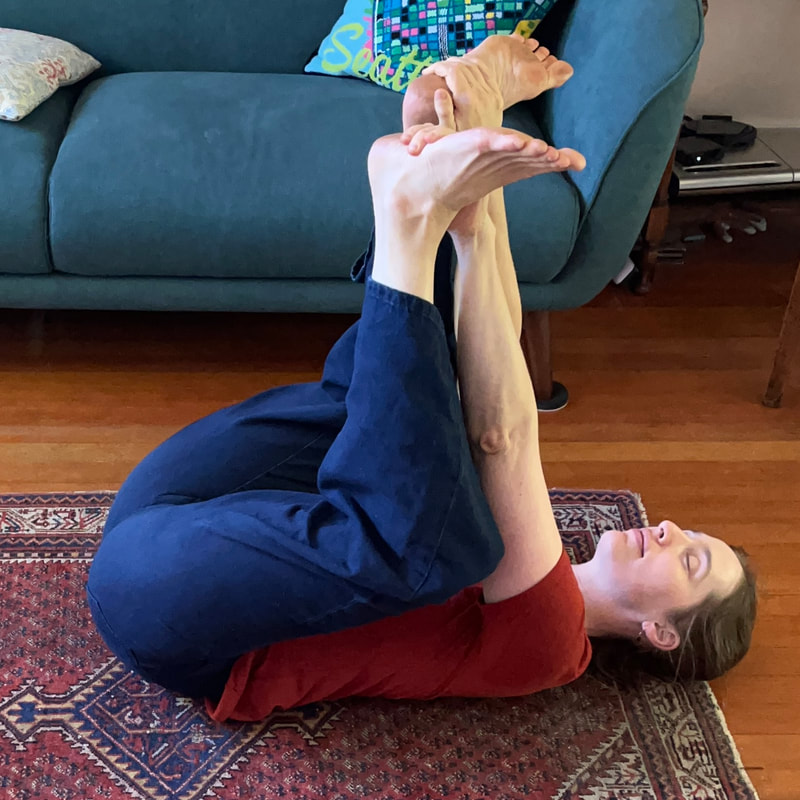
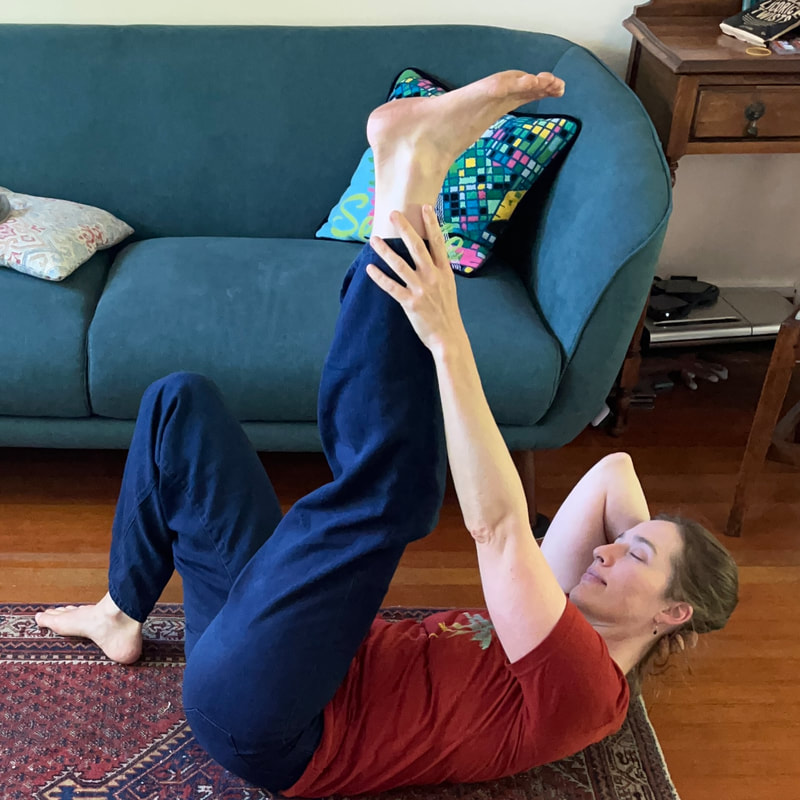
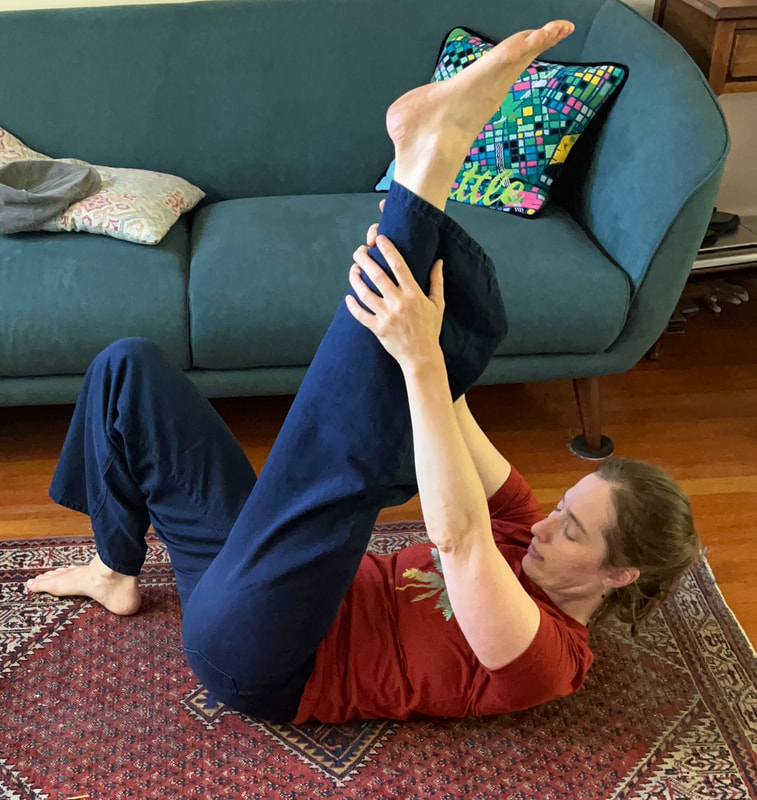
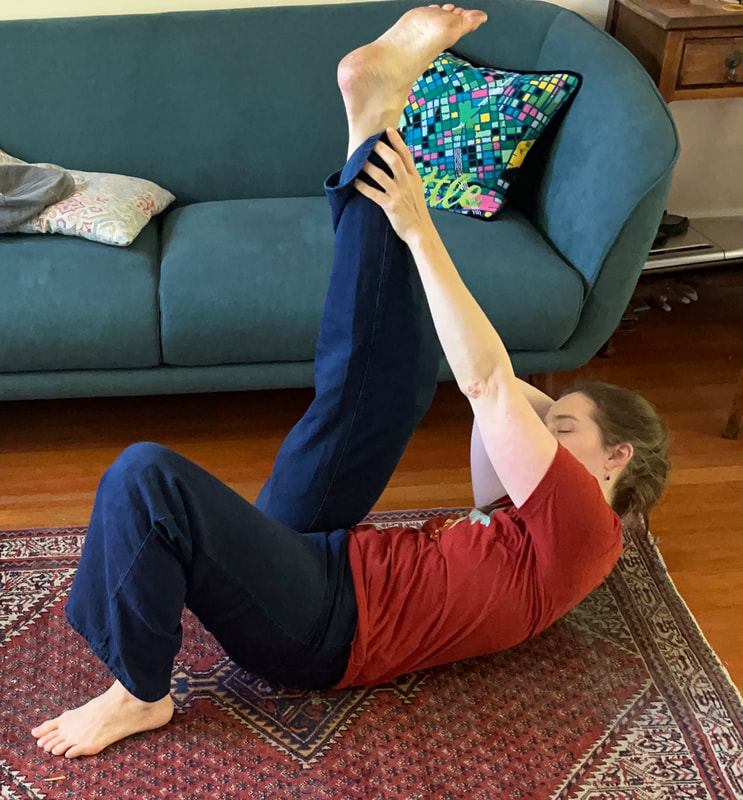
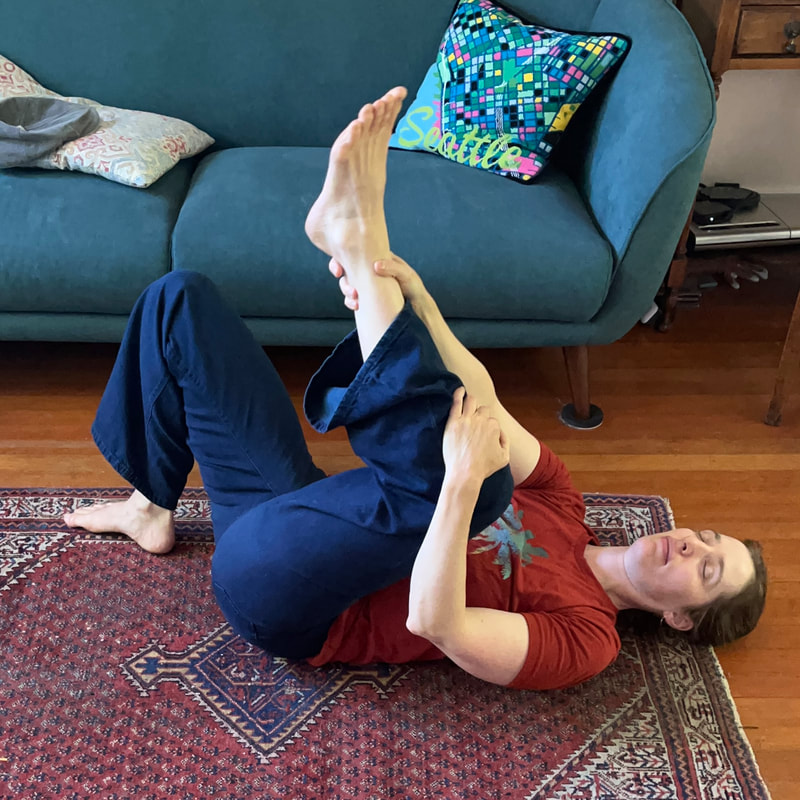
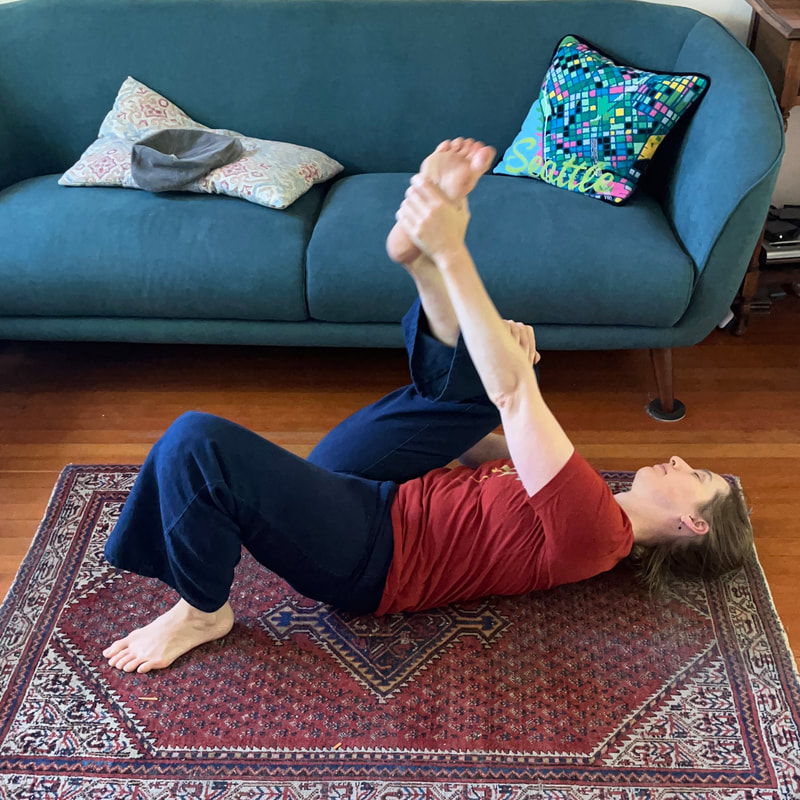
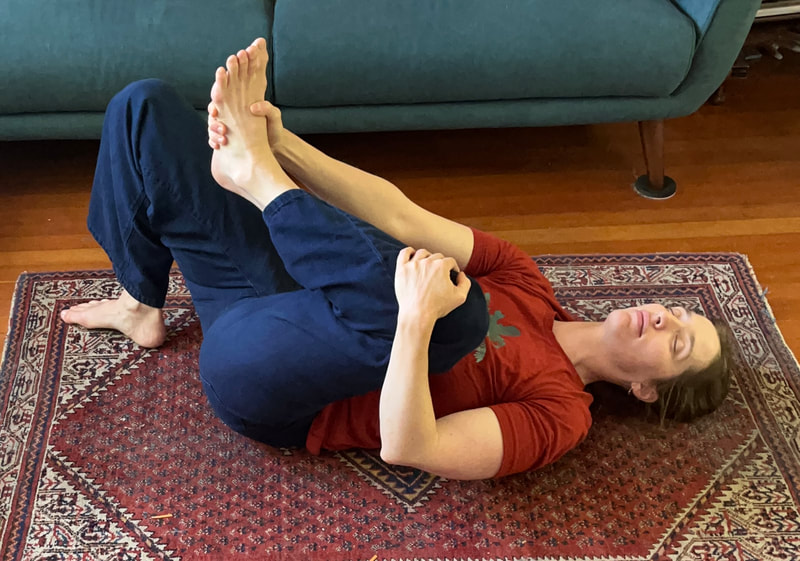
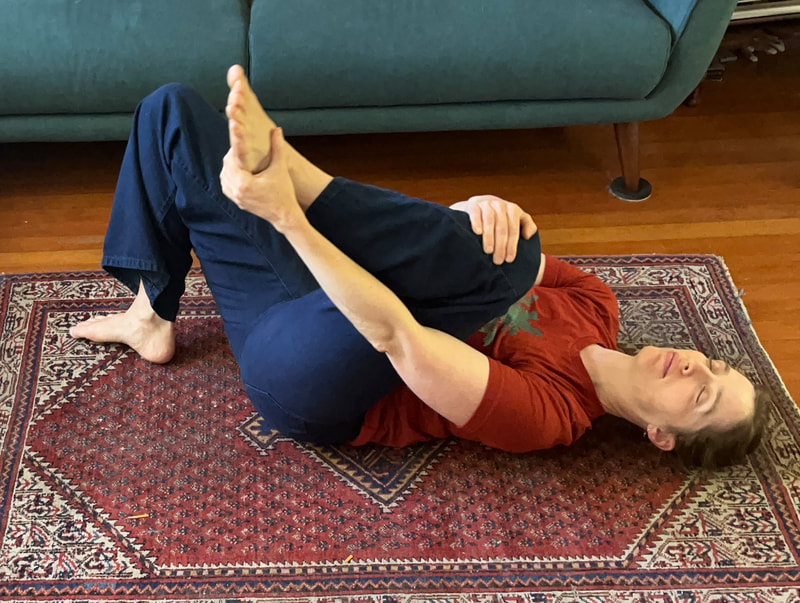
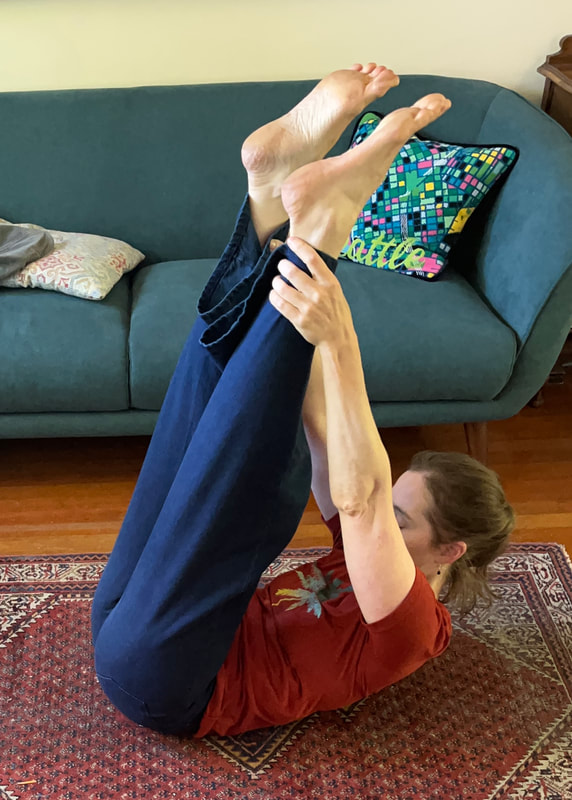
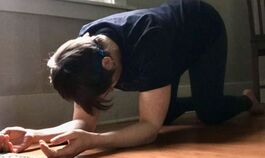
 RSS Feed
RSS Feed